#miyamoto layouts
Text
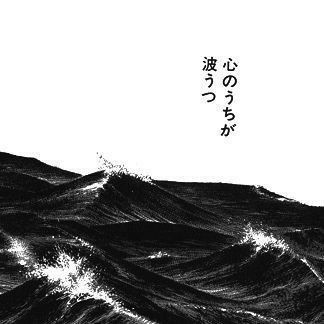




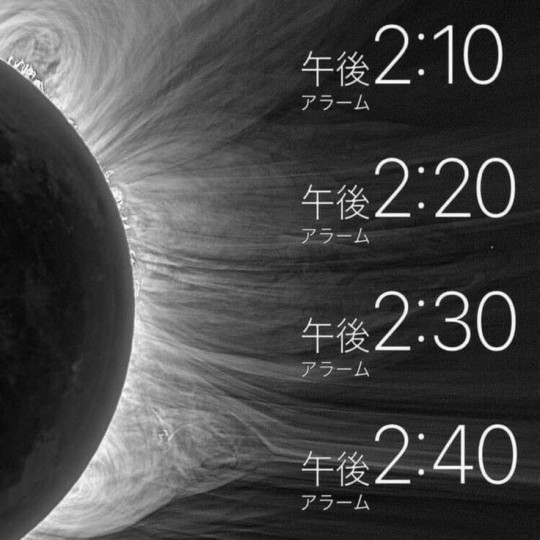

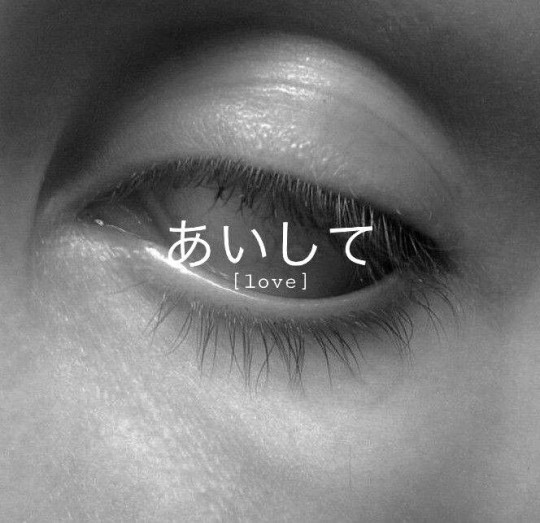

#moodboard#manga art#black and white#grunge#manga aesthetic#anime and manga#anime layouts#twitter icons#musashi miyamoto#vagabond#moodboar
130 notes
·
View notes
Text
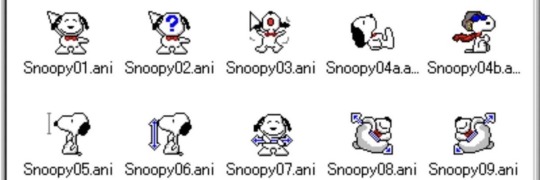


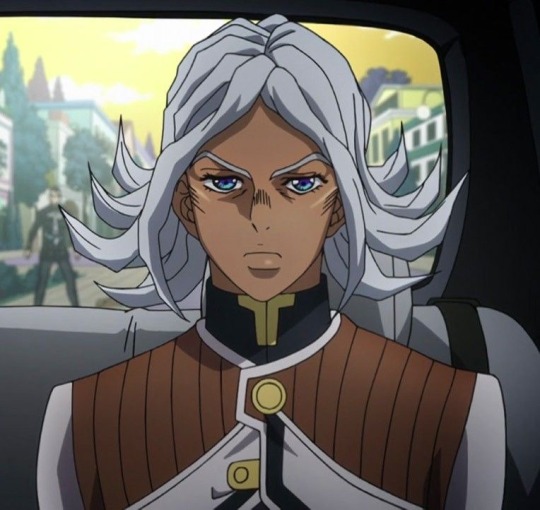


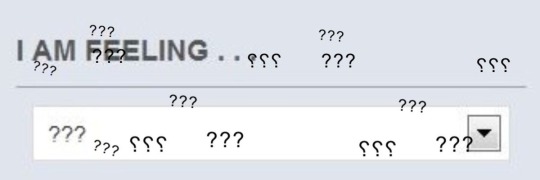



♱ But I would kill just to feel less invisible.
Requested by an Anonymous user.
#jjba layouts#jojo layouts#jojos bizarre adventure layout#jjba icons#jojo icons#terunosuke miyamoto#jojo terunosuke#jjba terunosuke
6 notes
·
View notes
Link
Chapters: 1/?
Fandom: Usagi Yojimbo
Rating: General Audiences
Warnings: No Archive Warnings Apply
Relationships: Jotaro & Miyamoto Usagi
Characters: Miyamoto Usagi, Jotaro (Usagi Yojimbo)
Additional Tags: Father-Son Relationship, Fluff and Humor, Canon-Typical Violence
Summary:
Usagi recognizes Mariko's playful, considerate spirit with a familiarity that aches, but he can also see little hallmarks of Kenichi in many of Jotaro's mannerisms, in the way that he speaks, and even the way that he plants his feet. The first way a boy learns is by copying his father. The reminder is a weight that Usagi has to be comfortable with, tempering the feeling that wants desperately to rise in his chest.
Kenichi's fingerprints are far more prominent in the clay than Usagi's are.
/Travels With Jotaro, continued.
#pspspspspsps#miyamoto usagi#usagi yojimbo#usagi yojimbo fanfic#'working on a longer thing'#'fuck it posts it as a shorter thing'#also im on the laptop and now i see why everybody upset abt the new dahsboard layout#where are my drafts bro
12 notes
·
View notes
Text

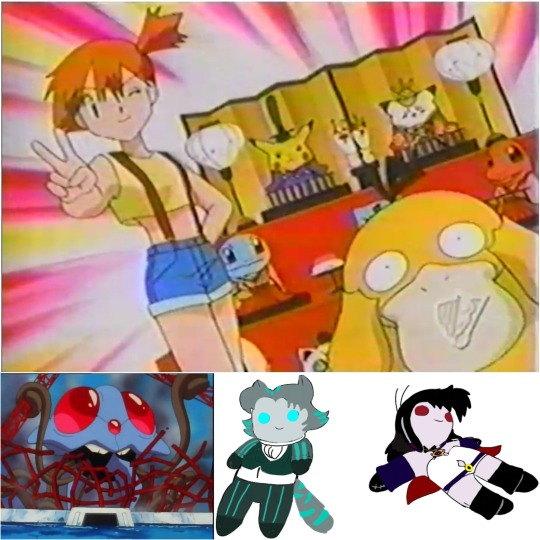

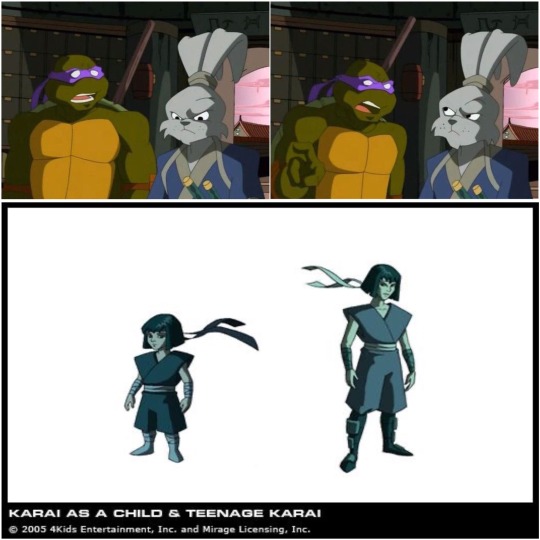
I liked it when Casey once called Renet “The Time Bimbo” in the old Mirage comics.
#layouts#screenshots#collages#stickers#hobby#habit#comic book page#comic book panels#black and white#mirage comics#renet#teenage mutant ninja turtles 2003#mirage tmnt#karai#donatello 2003#usagi yojimbo#miyamoto usagi#squirtle squad#charizard#ash ketchum#pikachu#misty#psyduck#tentacruel#chely audi#pokemon princess dolls#kids wb#speech bubbles#tales of the tmnt#the return of savanti Romero
22 notes
·
View notes
Text
Hello everyone following this blog!
Sorry for not updating you all sooner, there were things in my personal life that are keeping me from fully starting the tournament right now (including some preparation I still need to finish) and I feel terrible for not letting you all know the situation of this tournament.
However, as compensation for making you wait, I will now announce our competition during this tournament!
Meet the 32 couples that I chose from your submissions:
1. Gilgamesh x Enkidu (Fate)
2. Nero Claudius x Hakuno Kishinami (Fate/Extra)
3. Shiki Ryougi x Mikiya Kokutou (Kara no Kyoukai)
4. Medea x Souichirou Kuzuki (Fate/Stay Night)
5. Kirei Kotomine x Claudia Hortensia (Fate/Stay Night)
6. Akiha Tohno x Kohaku (Tsukihime)
7. Sakamoto Ryouma x Oryou (Fate)
8. Arthur Pendragon x Ayaka Sajyou (Fate/Prototype)
9. Tamamo-no-Mae x Hakuno Kishinami (Fate/Extra)
10. Yu Mei-ren x Xiang Yu (Fate)
11. Leonardo da Vinci x Romani Archaman (Fate/Grand Order)
12. Sion Eltnam Atlasia x Riesbyfe Stridberg (Melty Blood)
13. Hakuno Kishinami x BB (Fate/Extra CCC)
14. Ozymandias x Neferati (Fate)
15. Saber x Miyamoto Iori (Fate/Samurai Remnant)
16. Rama x Sita (Fate)
17. Artemis x Orion (Fate)
18. Brynhildr x Sigurd (Fate)
19. Ritsuka Fujimaru x Mash Kyrielight (Fate/Grand Order)
20. Iskander x Waver Velvet/Lord El-Melloi II (Fate/Zero and Case Files)
21. Rin Tohsaka x Artoria Pendragon (Fate/Stay Night)
22. Kirei Kotomine x Gilgamesh (Fate/Stay Night)
23. Shinji Matou x Shirou Emiya (Fate/Stay Night)
24. Sieg x Astolfo (Fate/Apocrypha)
25. Gilgamesh x Hakuno Kishinami (Fate/Extra CCC)
26. Shirou Emiya x Sakura Matou (Fate/Stay Night)
27. Ayaka Sajyou x Richard the Lionheart (Fate/Strange Fake)
28. Kadoc Zemlupus x Anastasia Nikolaevna Romanova (Fate/Grand Order)
29. Solomon x Queen of Sheba (Fate)
30. Canaan x Maria Oosawa (Canaan)
31. Mash Kyrielight x Morgan (Fate/Grand Order)
32. Ritsuka Fujimaru x Jeanne d’Arc Alter (Fate/Grand Order)
I’m sorry if your pick didn’t make it in, I unfortunately couldn’t choose all of them with the amount there were and some pairs had to be cut for reasons.
I can’t say when the tournament will be ready to start, but I’ll give a heads-up the day before.
Finally, I leave you all with the current tournament layout right now (any complaints about the background color will be directed at my sister who helped set this up):

That’s all for now. Currently the plan is to start this sometime soon, but I’ll let you know if this changes. Just keep your eyes out for any updates!
#a couple’s battle#tournament preparation#couple tournament#fate apocrypha#fate extra#fate grand order#fate go#fate prototype#fate samurai remnant#fate stay night#fate strange fake#tsukihime#kara no kyoukai#fate/zero#case files#melty blood#fate series#type moon#nasuverse#canaan#the tournament is almost here just hold on for a bit longer
11 notes
·
View notes
Text
Marioverse Sightseeing - New Donk City
Mario is probably most well known for being the hero of the Mushroom Kingdom, but before that, he used to be the hero of another place, a wide-spread bustling metropolis known for towering skyscrapers, constant construction and rampaging gorillas.
For this edition of Marioverse Sightseeing, let's hire a flying cab and take a look at the history of the city known as the Big-City, the City that Never Leaps, the Big Banana: the one and only New Donk City!

Arcade and the Game & Watch - 1980s
The concept of New Donk City can be traced all the way back to the very beginning of Mario's history, with many of the early 80's arcade games being set in construction sites or other industrial settings. Heavily featuring girders, barrels and conveyor belts, these elements would become iconic characteristics of the setting that would eventually be named New Donk City.
The first direct reference to the setting of these games is in Donkey Kong (Game & Watch, 1982), which featured a backdrop of tall buildings behind the Construction Site. Besides that, some interviews have described the setting of Mario Bros. (Arcade, 1983) as having "the feeling of an underground New York sewer system."
And then when we made the original Mario Bros. game, that was the first game that had pipes in it, [...] it had the feeling of an underground New York sewer system. [...] I thought what kind of guy would be there working on the pipes? A plumber!
- Shigeru Miyamoto, 2009
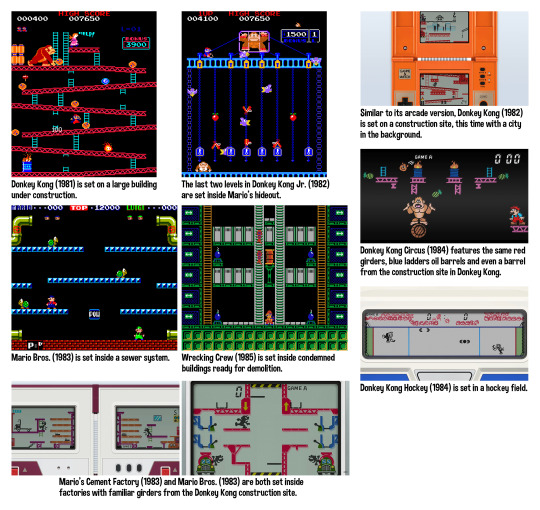
Donkey Kong - 1994
Released for the Game Boy, Donkey Kong is a sequel to the Donkey Kong series, taking place some time after Donkey Kong 3 and reimagining/expanding the gameplay from the original Donkey Kong.
It is the first game to firmly establish the location where the series is set in. Its first world is a direct homage to the original, featuring a construction site with similar layouts. It's second world, however, is that of the Big-City, a sprawling urban area filled with girders and construction equipment. This visual aesthetic for the setting of the Construction Site would remain prevalent throughout many games in both the Mario and modern Donkey Kong series.
As an additional connection, this game's second world, the Forest, seemingly takes place in the same forest Donkey Kong Jr. took place in, featuring a Stage inspired by the first level of that game, complete with Snapjaws as well.

Donkey Kong Land - 1995
The next appearance of the city was in Donkey Kong Land, also for the Game Boy. The game's fourth and final world (reached via zeppelin) is known as Big Ape City, and is stated to be "Donkey Kong's [now known as Cranky Kong] favorite stomping ground, Big City."
Like its predecessor, Big Ape City is a sprawling urban area filled with many skyscrapers and construction zones, making its link to Donkey Kong '94's Big-City (and later New Donk City) apparent.

Donkey Konga 2 & Donkey Konga 3 - 2004 & 2005
During the story mode of Donkey Konga 2, for the GameCube, Donkey Kong and his friends visit a large city seen off the coast of DK Island. As a main city in the Donkey Kong series, located near DK Island and featuring the iconic red girders, it's certainly the same one as the Big-City/Big Ape City seen previously. Cranky Kong being the one who suggests the DK crew go on tour there solidifies this connection, as he'd already be familiar with the city.
Additionally, in the main singleplayer mode (Street Performance), Donkey Kong performs on the street of the city, while New Donk City will eventually be shown to be known for having a big music theme, with the New Donk City Festival and plenty of street performers.
The same city can also be seen in Donkey Konga 3. Reappearing in many of the game's menus once again.

Bonus: Donkey Konga 2 locations
In addition to featuring the iconic big city, Donkey Konga 2 also features a wide set of interconnected backgrounds which paint a clearer picture of the area surrounding the city: Snowy Mountain, Port City and Konga Land.
For starters, the city can be seen in the main menu of the game, seen from Donkey Kong Island. Assuming that city to be New Donk City, that would place the island somewhere south of the Metro Kingdom. The menu background also shows a large mountain to the east of the city, likely intended to be the Snowy Mountain.
Additionally, Port City is visible from Snowy Mountain, possibly being the near the port Donkey Kong (now Cranky) used to escape Mario during Donkey Kong (1994), placing Port City on the foot of the mountain, on the shores directly across from Donkey Kong Island.
The Konga Land theme park is also likely nearby, given the locations of the other stages. It features extensive Kong theming, such as the volcano, a Rambi carousel and even its own name, fitting right in with the other Donkey Kong theming found in New Donk City (street names) and Port City (which features bridges decorated with Rattly statues, as well as cafes named Cafe DK and Deli Conga! Conga!).
Given the DK-themed Snowy Mountain region also features winter villages and ski lifts, could it possibly be the location of Mario Kart tracks DS DK Pass and Wii DK Summit, as well as Donkey Kong: Barrel Blast’s own Snowy Mountain Courses?

Super Mario Odyssey - 2017
The latest and most prominent iteration of the city was in Super Mario Odyssey on the Nintendo Switch. In it, the city (now named New Donk City, probably its official name) is shown to be a part of the Metro Kingdom, located halfway across the globe from the Mushroom Kingdom, and Pauline is shown to be its current mayor.
We know this is the same city as the previous ones, not only due to the abundant construction and metropolitan skyline, but also due to the city's New Donk City Festival, which commemorates the city's history via a series of large electric billboards depicting the events of the original Donkey Kong.
The city later reappeared in Mario Golf: Super Rush as its own golf course, complete with two different layouts built on top of the New Donk City Plaza and its surrounding buildings.

Honorable Mentions
Not every large metropolis seen in a Mario game is New Donk City, and while the ones described so far are all but confirmed to be the same, other locations can be speculated and theorized to be as well.
For example, the game Mario vs. Donkey Kong (a successor to the Donkey Kong '94 game and the original Donkey Kong series in general), takes place largely around different areas of a city filled with construction equipment, specifically World 1, World 6 and the final boss battle of both the regular and extra modes. Adding to that the fact that along the series, DK travels from his jungle island to said city (later even working at Mario's Toy Company) frequently, and that Pauline is often present, it's possible this city is also an appearance of New Donk City.
The game Mario Party 7 takes place in a cruise said to be on a World Tour, visiting various locations around the globe. One of these boards is Neon Heights, taking place atop skyscrapers over a city inspired by american cities such as Las Vegas, Hollywood, Cape Canaveral, and most importantly for this post, New York City. This makes Neon Heights another possible candidate for being New Donk City.

Thank you!
And that concludes our brief look into the history of New Donk City, a city that has always been strongly associated with the Mario and Donkey Kong series, going by many names such as Big-City or Big Ape City. A big thank you to @seandwalsh for helping tremendously with the research and basically co-authoring this post alongside me.
As always, I hope this was an enjoyable and informative read, and if you enjoyed this type of post, make sure to check Marioverse Discord server for more theories and discussions on Mario lore!
https://discord.gg/ARUSxjmcSS
103 notes
·
View notes
Text
The mythical Ura Zelda, and the original Ura Zelda on the NES
"Ura Zelda" is known as the 64DD expansion for Zelda: Ocarina of Time that was eventually released as "Master Quest" on GameCube. But in Japan, it was still called "Ura Zelda", as "Master Quest" was just a localized name. But it wasn't the first "Ura Zelda" in the series!
裏 = Ura (reverse/back/otherside) https://en.wiktionary.org/wiki/%E8%A3%8F#Noun…
The Japanese release of Master Quest was still called "Ura" (裏), the character is on the logo. It was localized in English as "Master Quest" which sounds like a play of the localized term of "2nd QUEST" on the NES Zelda.
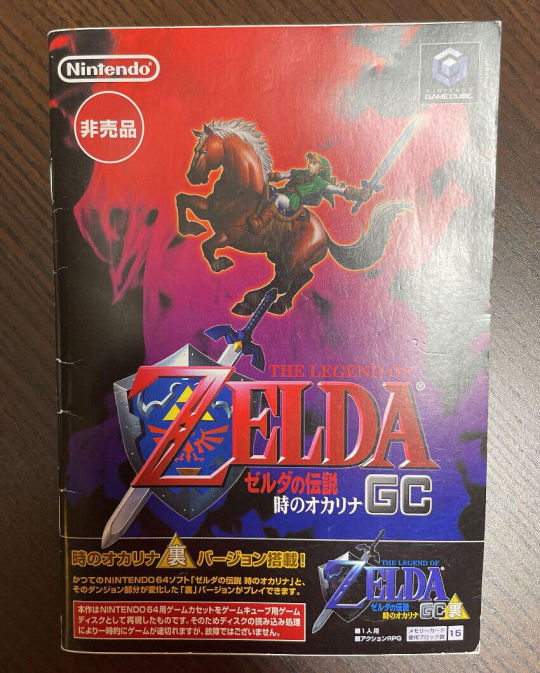
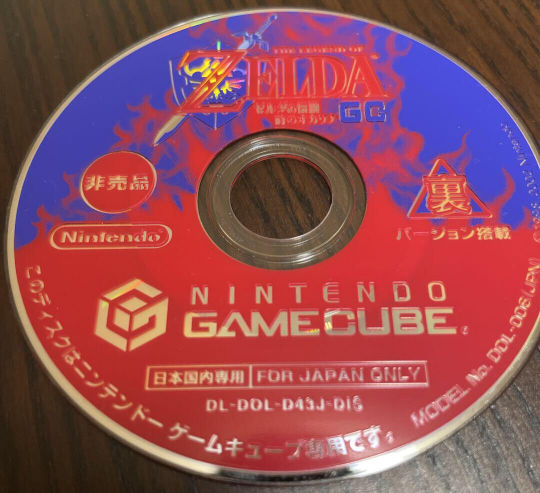
The Japanese trailer for Zelda: Ocarina of Time 3D references the GameCube release, and the narrator refers to the second challenging version as "Ura Zelda" twice. 裏 (Ura) is still part of the the logo.
youtube
The English localization of this trailer refers to "Master Quest" as a "Second Adventure" hidden in the game. "Only those who cleared the original story can play the Master Quest".
youtube
The NES Zelda had a "2nd Quest", where upon beating the game, you're presented with a new quest with 9 new/rearranged challenging dungeons. The overworld had minor changes here and there, but the layout mostly the same.
In the Spirit Tracks Iwata Asks interview, Takashi Tezuka talks about how the 2nd Quest of the FDS Zelda was the result of a mistake of only using 1 side of the disk.
In the Japanese transcript, they're actually using the term "Ura" 裏.
https://nintendo.co.jp/ds/interview/bkij/vol2/index6.html… https://iwataasks.nintendo.com/interviews/ds/zelda/1/5/
The Legend of Zelda originally released for the Famicom Disk System. The Disks contained data on both sides, and because Takashi Tezuka only used one side (half), it was decided to create the "Second Quest", or "Ura Zelda" on the other half.
裏 = Ura
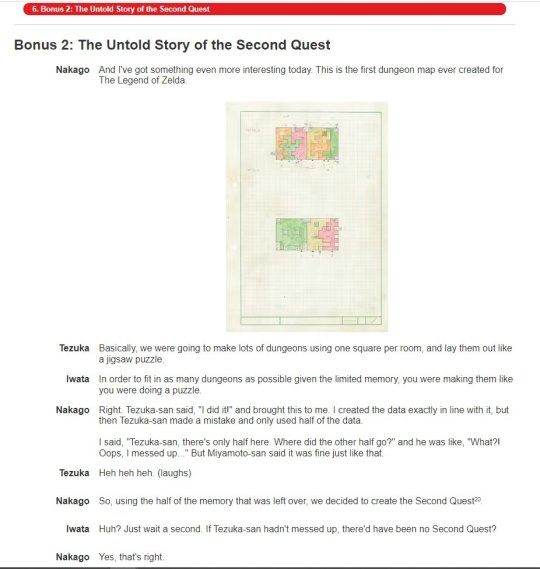
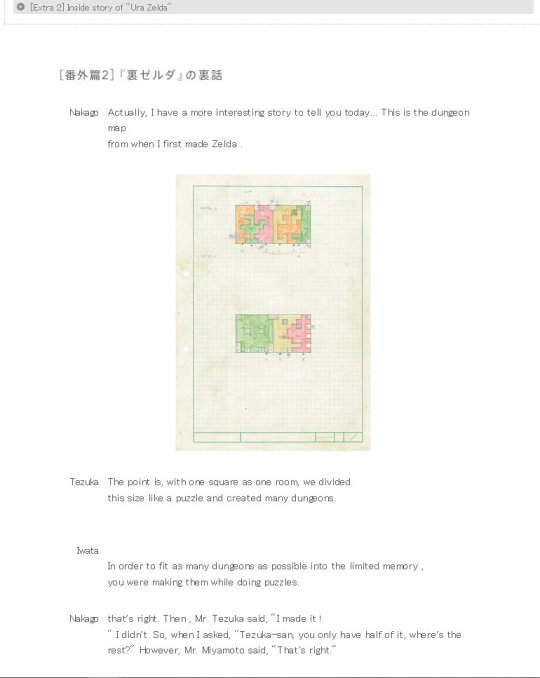

Iwata: So this is the Second Quest resulting from Tezuka-san's mistake...
Iwata: This is the "Ura Zelda" that Tezuka made by mistake...
岩田: 手塚さんが間違ってできた『裏ゼルダ』がコレ・・・。
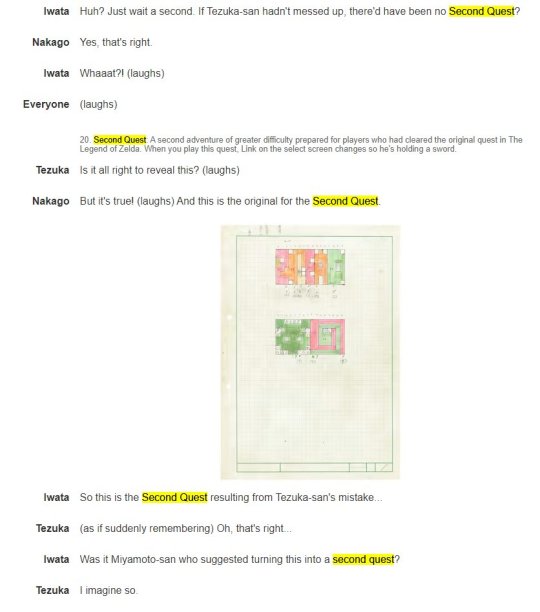

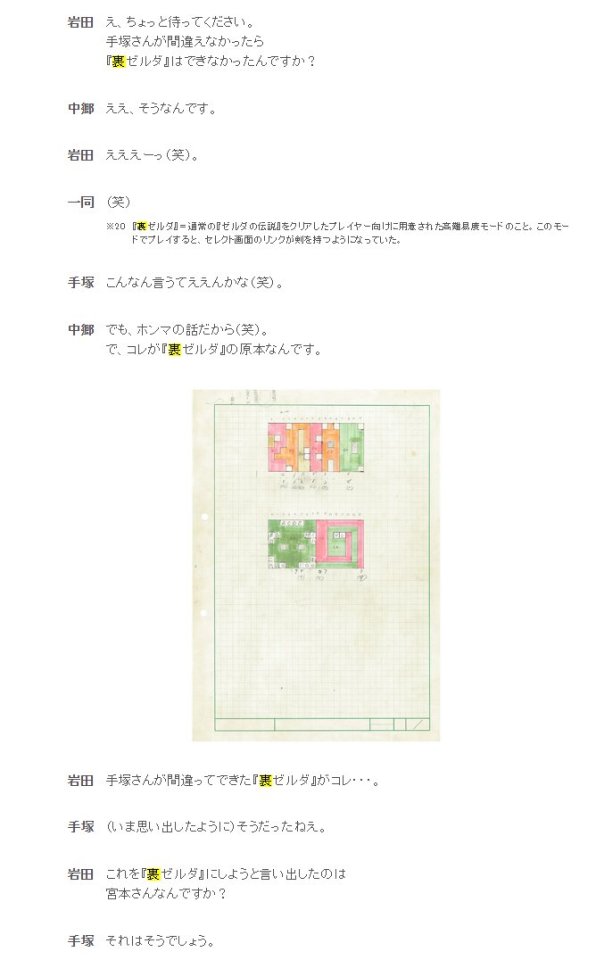
Second Quest: A second adventure of greater difficulty prepared for players who had cleared the original quest in The Legend of Zelda.
"Ura Zelda" = A high difficulty mode prepared for players who have cleared the normal "The Legend of Zelda".
I had heard some time ago second hand that the 2nd Quest in Zelda 1 was called "Ura Zelda" in Japan. The Japanese transcript of the Iwata Asks interview confirms it. I think if you mention "Ura Zelda" to someone in Japan before N64, they'd think about the "2nd Quest" on Famicom.
Going by the definition of "Ura" as "back", "other side", "reverse side", not only is the second adventure in Zelda 1 like another, parallel world compared to the first quest, its literally contained on the other side of the disk on the Famicom Disk System that you flip over.
https://legendsoflocalization.com/the-legend-of-zelda/graphics/

So the entire intent of "Ura Zelda" on the 64DD as an addon for Ocarina of Time goes all the way back to the "2nd Quest" of the NES/Famicom Disk System version, to create a second, more challenging adventure with new dungeons. Which is what Miyamoto and Aonuma consistently said.
http://angelfire.com/games5/makzelda/interviews/zgmiyamotosw99.html…
Nintendo.com-1999
Miyamoto: The story in "Ura Zelda" will be similar to Ocarina of Time but with new maps and scenarios. "Ura Zelda" will use the existing Ocarina of Time cartridge but with different dungeons, and new locations for the treasures.
Incite magazine Dec 1999
https://archive.org/details/incite-video-gaming-1-december-1999/page/84/mode/2up?view=theater… Miyamoto: Well, simply put, every time you go into a dungeon, the tasks will be different. If there was a treasure chest in a certain location the last time you went in, then the next time you in it won’t be there.
This quote is correct. After playing Ocarina for the first time, every time you go into one of the new dungeons in URA Zelda, they'll be rearranged with chests in different places, and different paths. This became exaggerated with people thinking he meant random dungeons.
A while back I compiled several interview quotes to show the consistent message Nintendo gave about Ura Zelda/Master Quest being about re-arranged dungeons. https://nteamhero.tumblr.com/post/102117951167/zelda-gaiden-majoras-mask-and-ura-zelda-another…
Ura Zelda is described as a parody, 2nd Quest, "Another" Zelda, a WaZelda, flip-side.
Nintendo never promised more than re-arranged dungeons for "Ura Zelda". Fan speculation (and gaming press) made "Ura Zelda" more mythical than it was, often confusing early builds and cut content for Ocarina of Time (ex. Unicorn fountain) as "Ura Zelda" content.
Sometimes gaming press like IGN and some European magazines playing telephone would confuse Ura Zelda and Zelda Gaiden (Majora's Mask).
https://ign.com/articles/1999/08/21/gaiden-and-ura-zelda-split… "Miyamoto confirms that Zelda Gaiden and the 64DD "Ura Zelda" are two separate games."
IGN's first impressions of the GC release compare Master Quest to the 2nd Quest of the original Zelda. https://ign.com/articles/2002/11/28/ocarina-of-time-and-ura-zelda-arrive…
"Ura seems to be like a 2nd Quest for Ocarina of Time, with the most notable changes involving item placement and puzzles in the dungeons"

An IGN interview with Miyamoto mentioning that they might have to release a special edition in the future if the 64DD doesn't come out. A few IGN articles use the term "Another Zelda" as translation for "Ura Zelda", which supposedly isn't correct.
https://ign.com/articles/1998/11/18/zelda-dd-the-other-adventure…
Similarly, Nintendo Power's coverage of the original Zelda's second quest describes it as "Another World". The feature mentions that the main differences are that the Underworld dungeons are vastly different, and the placement of the items in the dungeons.
https://archive.org/details/NintendoPower1988-2004/Nintendo%20Power%20Issue%20001%20%28July-August%201988%29/page/n25/mode/2up


So the whole point of "Ura Zelda" as an expansion for Ocarina of Time for the 64DD was to recreate the concept of the 2nd Quest of the original Zelda on N64, by making a new set of re-arranged dungeons, as a challenging second quest, which is what Miyamoto consistently said.
Ura Zelda is totally different in concept than the Zelda 64/Ocarina of Time that would have been developed originally for the 64DD and used its specs before moving to cartridge. What fans imagined was probably closer to Majora's Mask.
#Ura Zelda#Ocarina of Time#Zelda 64#Master Quest#2nd Quest#Shigeru Miyamoto#The Legend of Zelda#64DD#N64#Youtube
5 notes
·
View notes
Text

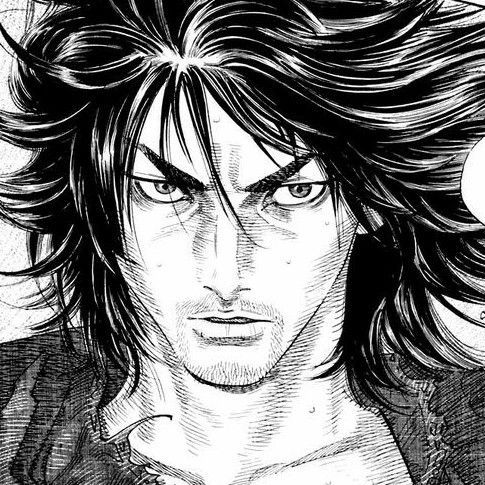
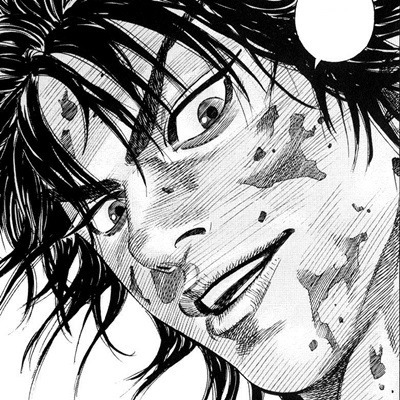


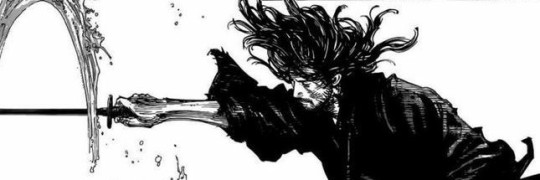
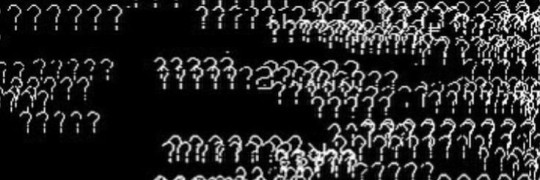
⌕ ˓ musashi miyamoto layouts ⌗
like or reblog if you use/save ☆
#anime layouts#anime packs#anime icons#anime headers#vagabond#vagabond manga#vagabond layouts#vagabond packs#vagabond icons#vagabond headers#miyamoto layouts#miyamoto packs#miyamoto icons#miyamoto headers#musashi miyamoto#takezo shinmen#takezo layouts#takezo icons#takezo packs#takezo headers#dividers#dividers black
294 notes
·
View notes
Note
Vagabond layout pls






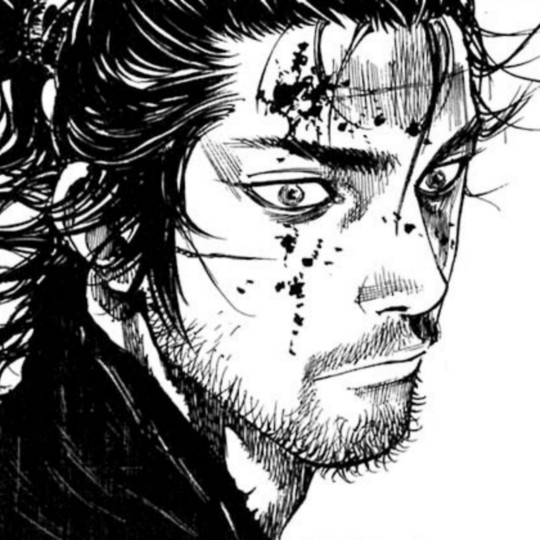
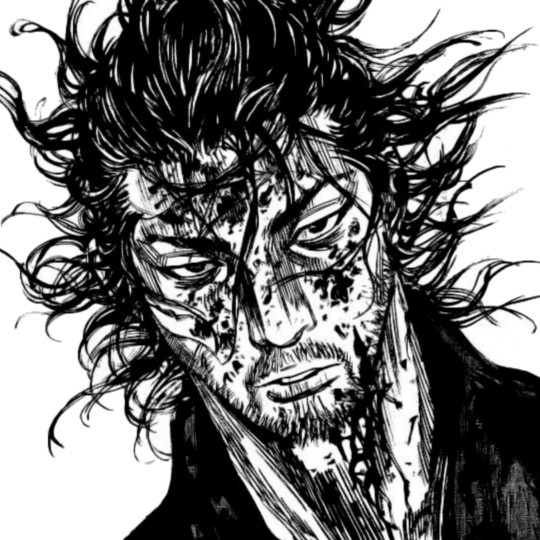
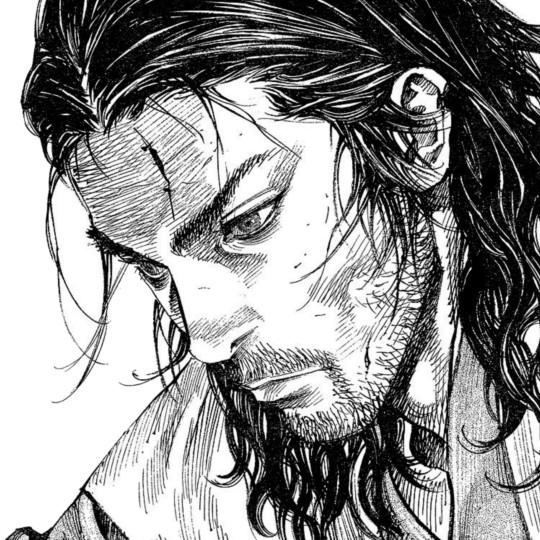
vagabond・manga layouts
pls like if you save
u can check more vagabond headers here!
#vagabond#vagabond layout#vagabond manga#vagabond headers#vagabond icons#vagabond edit#vagabond cap#musashi miyamoto#musashi miyamoto icons#manga layout#manga icons#manga headers
352 notes
·
View notes
Text


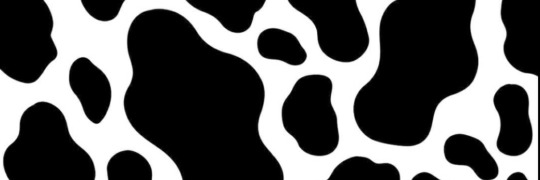





✩% VAGABOND LAYOUTS !
like or reblog
#random icons#messy headers#messy layouts#animanga#manga icons#manga layouts#manga packs#manga messy layouts#vagabond manga#vagabond icons#vagabond messy layouts#vagabond packs#miyamoto musashi#miyamoto musashi layouts#soft packs#soft layouts
249 notes
·
View notes
Text
## musashi miyamoto users
musashiweb
musashifalls
musashivie
i4miyamoto
musashivie
bymusashi
MIY4MOT0
ifsmusashi
like or reblog if you save !
#musashi#miyamoto musashi#mad vagabond#messy animes layouts#anime users#anime messy layouts#soft layout anime#users anime#twitter users
35 notes
·
View notes
Photo
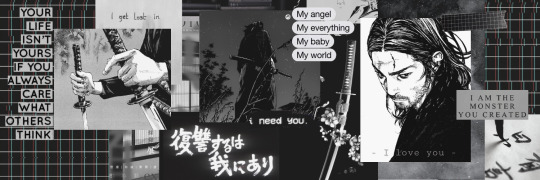
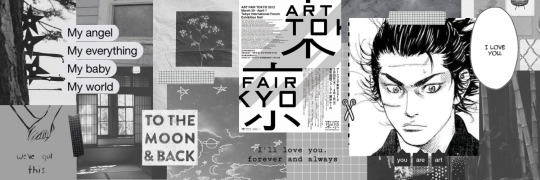

don’t repost
reblog or like if u save/use
a special request from a friend ~ ♡
71 notes
·
View notes
Text
my (unasked-for) thoughts on wtt, specifically Yuzu and Nathan (because let's be honest, i woke up at 4 am to watch and sort of dozed through most of the men).
Yuzu: Heaven and Earth is a very Japanese program. he's done these before, but usually as exhibition skates (Hana Wa Saku, Haru Yo Koi, Requiem of Heaven and Earth, etc), and they were choreographed beautifully by either Kenji Miyamoto, or David Wilson so that they appeal and make sense to a western audience (and western judges). i don't think Shae-Lynn Bourne was the right person to choreograph Heaven and Earth, because it just didn't come across, and felt very unfinished. when i watched him skate it at Jnats it reminded me of when we've seen his free programs at Autumn Classic, where the general layout is there, and the jumps are there, but a lot of the choreo hasn't quite been finished yet. but it was the same at Worlds, so obviously it was finished. to me, it just seems like there's a lot of time where there's just not a lot going on. SLB is very good at doing good, strong, dynamic programs for Yuzu (Seimei, Hope and Legacy) but i just feel like she missed the mark on this one, and he might have been better off getting Kenji Miyamoto or David Wilson to do the choreo for Heaven and Earth. and all of this is to say that i don't think doing a very Japanese program is a mistake, i just don't think this program is strong enough, even skated clean, to beat Nathan.
Yuzu skated it pretty well today. obviously there was the popped 4S, but his 3As were more solid than the one in his short program was. there were a few bobbles on jump landings, but he's an expert at disguising them as choreography. was he underscored? i think a bit, yeah. it feels to me like the judges score him more harshly than they do other skaters. he's expected to be perfect, and when he's not... if he shows the tiniest bobble or flaw... his GOEs go down disproportionately.
Nathan: Metamorphosis is a very strong program, and my favorite of Nathan's free programs. it's a strong, dynamic program that was well-choreographed by Shae-Lynn Bourne. i think she did better by Nathan than she did by Yuzu in this case (probably not intentionally). he obviously also had a popped jump, so he wasn't clean, either. he executed the choreo well, but i just never feel like he truly feels the program. he's a skating machine, but he doesn't really seem to emote.
i do think he deserved to win, but not by ten points. he didn't skate ten points better than Yuzu did. whereas Yuzu has to do everything perfectly, i feel like Nathan is given a lot of leeway and benefit-of-the-doubt, which leads to inflated scores.
#skating#figure skating#yuzuru hanyu#nathan chen#wtt#world team trophy#wtt 2021#world team trophy 2021
41 notes
·
View notes
Text
FEBRUARY 4, 2021: 09:00 HOURS
if there’s one thing gallagher students can rely on, it’s their university always being on time. they had been told on monday that the buses for washington dc would leave at exactly nine, and on the dot, an army of coach buses parade out of gallagher’s gates, as faculty members on each bus take attendance. unsurprisingly, students know better than to miss the first mission of the semester. the faculty member goes down the aisle, handing students their designated assignment envelopes. they’ll have the rest of the hour and change bus ride to consider these assignments and mentally prepare for what’s to come.
for five students -- yara gale, rowan endsley, nico casiraghi, maria flicke & satomi miyamoto -- their assignments look a little different. their note reads:
Meet your team and faculty advisor at 4820 Massachusetts Ave NW at 12:00 for your mission assignment. Keep this confidential.
FEBRUARY 4, 2021: 12:00 HOURS
the students come to find that the location given to them is nothing more than a starbucks. professor zhou convinces each of them to buy themselves a drink, because they’ll be going for a walk. their destination isn’t far ; the department of homeland security is right up the street, and professor zhou leads them to it. walking the students up to the building, she explains a little bit of the history of homeland security, and the role it plays in the government -- which, of course, they all already know.
with the five students in their gallagher uniforms, they appear like any other school tour around the nation’s capital. but not all professors would then tell their students, “ tomorrow, you are going to be breaking into here. ”
FEBRUARY 5, 2021: 6:30 HOURS
after showing the students their target, professor zhou had taken the students back to a reserved classroom at georgetown university, where they had spent the remainder of the day planning their mission. and unfortunately for the students, whose classmates would be spending their first night in dc going out and enjoying the time away from campus, their mission began bright and early the next morning. the shift change for the custodial staff at dhs headquarters is at seven am sharp, so by six-thirty everyone is at their post. professor zhou’s camouflaged van sits in front of the starbucks they had met at yesterday. as faculty for a school sanctioned mission, she’s sitting this one out, sipping coffee while she watches nico behind the computers in the back of the van hack into the dhs security system. ( naturally, the professor is the team member who works best with nico. ) it’s not an easy task for any student, but yesterday an encryption professor had walked him through the way to bypass the government security -- and by the time the clock strikes seven, they’re in.
meanwhile, satomi miyamoto and yara gale are stationed near the service entrance, watching and waiting for two unsuspecting arriving custodials employees who are ready for an exciting start to their day. yara distracts them while satomi sneaks up from behind and knocks them out clean. in the nearby alley the two students steal their poor victims' uniforms and id badges ( but don’t worry, they leave them with warm blankets, so they don’t get cold ! ) . with a swipe of their new badges, they’re in. the previous day had been spent memorizing the layout of the building, but the spies have a few hours to get used to the layout of the building, blending in and finding their target : the office of international engagement.
FEBRUARY 5, 2021: 10:00 HOURS
eight-thirty is the approximate start time for agents working in the building, but it’s at ten when the first tour group is welcomed into the building. rowan endsley and maria flicke blend in well with other college students who have come from all over to see the dhs for themselves, two mock trial clubs from two different universities. nobody thinks twice about not recognizing them, and rowan is quick to make friends with two of the only girls on one team, laughing along with them throughout most of the tour.
unsurprisingly, school tours only scratch the service of a government building, but the gallagher students had already known the route the tour would take them -- and really, it gets them through the door, which is the real goal. the tour includes two floors of the building : the first and third. ria waits until the tour moves between floors, and with rowan’s help of creating a diversion by bombarding the guide with questions, she’s able to slip away from the group unnoticed. a fake building id had been made to swing from her side as she walks, standing tall and confidently ( like she belongs there, which as far as anyone is concerned, she does ) . of course, the id is just for show, a pawn to use so when the director of the office of international engagement finally shows her face on the floor, ria is able to smoothly bump into her and switch their id badges. after a summer of interning in a government office, ria knows just how to play the apologetic and nervous intern. the director doesn’t even flinch.
once the director’s id badge has been secured, ria heads to the ladies room, walking into the middle stall and… well, certainly not sitting down. thankfully nobody’s there except for a woman in the stall to the left of her, yara. careful not to touch anything in the bathroom ( because ew ) , she slips yara the badge. there’s no other exchange between the two women, only a toilet flush in confirmation before yara comes out of the stall. the janitor uniform has been removed and hidden behind the toilet ; sporting a sleek black suit and brunette bobbed wig, anyone passing her by in the hall will definitely mistake her for the director, matching her new id.
it’s that fancy new id that gets her up to the top floor, where all the records are held. janitor satomi is already waiting up there for her, and in the van nico is careful to follow her every move, making sure every camera that records her doesn’t catch a glimpse of her face. they’ve memorized the layout of the building so much that yara could find the right room with her eyes closed, but they’re very much open and alert right now -- and even if they weren’t, that’s what satomi’s for. satomi stations themselves at the end of the hallway, the camera’s single blindspot, despite nico already having a loop of an empty hallway playing for the security guards watching from their cushy post. they watch as yara finds the right room, holding their breath as yara swipes the id card to open the door. the monitor beeps, asking for a fingerprint, and yara’s heart begins to pound. she knew they would ask for it, but her hands still shakes slightly as she takes out the little piece of plastic with the director’s fingerprint imprinted on it. extracting a fingerprint from the id wasn’t hard, but the chances that the fingerprint was the director’s and not someone else’s ? low, but not low enough. but the light soon flashes green and yara exhales a breath, quickly slipping into the room.
she’s searching for a file, but the room is full of filing cabinets. perhaps yara’s been burdened with the hardest task of the mission, finding a needle in a haystack in record time. satomi can only guard the hallway for so long, and the file has to be found before ria and rowan’s tour finishes. so she sets to work, naturally starting alphabetically. this is the only part of the mission they couldn’t have planned for, but it only takes yara twelve minutes ( which feels like an hour for everyone involved ) to find the correct file : LANAI CODE.
it’s a miracle there aren’t anymore knocked out employees at satomi’s feet when yara exits the room, because that would have certainly been hard to explain, even without the cameras on. with the target acquired, the rest of the mission is now simple -- get the hell out. the files are slipped to satomi so yara can change back into the janitor uniform and return the id card. ria had returned to the tour group with no problem, but it’s at the very end of the tour that rowan asks to use the restroom. thankfully nobody’s around in the ladies room to witness the janitor handing a touring college student confidential government files. rowan waits in the bathroom stall until she hears satomi exit the bathroom, files resting in her lap.
lanai code…
the curiosity is overwhelming, and thankfully nobody’s around in the ladies room to witness rowan endsley sneak a peek at the file. it’s for the best anyway, considering when the team meets back at the van -- now ironically parked in front of the international spy museum -- the file will be given to professor zhou, and all she will say is a thank you and that they’ve all passed, without sharing what the file was even for. it’s not unlike gallagher to keep secrets, because it’s not unlike spies to keep secrets. but curiosity kills the cat.
lanai code, as rowan discovers through page flipping and speed reading, isn’t a code but a long-term mission launched by the cia. there’s no specific information about what the mission entails, but rowan can see why it was so heavily guarded : each page holds the profile of a different american spy who was tied to the mission, and has since been deemed missing or presumed dead. rowan’s reading the page of a woman named marama ng, the most recent missing spy from nearly two years ago ( and had she read on, she would’ve noticed that her daughter is a current gallagher student ) , when she hears someone walk into the bathroom. quickly shutting the file, rowan stuffs it into her backpack. hopefully the tour group hasn’t left without her.
MISSION: COMPLETE.
27 notes
·
View notes
Text


I think I like the Spider-Man costume better when his eyeholes are unable to blink back.
#layouts#screenshots#youtube#hobby#habit#ninja assassin#assassins#ninja#stealth#teenage mutant ninja turtles 2003#tmnt 2003#tmnt 2k3#heart turtles#💚🐢#bo staff#donatello 2003#donny kun#usagi yojimbo#miyamoto usagi#crossover#samurai rabbit#purple#the smart one#big brawl part 3#battle nexus#tmnt 2003 season 2#red eyes#narrowed slits#brains of the bunch#donnie tmnt
15 notes
·
View notes
Text
Research: Persona Project
Ronin by Frank Miller
Ronin was a comic released by DC comics in 1983, and was created by Frank Miller, who besides having worked on the script, also worked on the illustrations.
Ronin is a internal evolution of the author, something that translates into a leap in quality in his work, transforming and aesthetically renewing his work.
It’s like stepping out of his comfort zone to face challenges to innovate.
Frank Miller stood out for his ability to break models, to shape a canon to a new look. And when he got to DC, he had a lot of new ideas involving the past and future, honor, society, discipline, technology, science and ecology. Miller’s mind amalgamated all this essence that culminated in this miniseries, overcoming any obstacles and marking the industry.
Ronin is the story of a past and a future that come together through science. From feudal Japan to the most decadent and technified New York, a samurai without a master, will return to solve the mistakes of the past, and do whatever it takes.
Miller brings with Ronin his interest that he already showed in other comics, which is the Japanese tradition, molding a crucible in which the past and future are mix organically, when technology is the next step in evolution. New York is engulfed by artificial intelligence that replaces the obsolete, the rotten and the dead, with the new and pure.
But for me, the best part of the comic, apart from the script and the whole idea of setting, is certainly the art.
The art of Ronin, maybe not for everyone’s taste, because it looks quite experimental and surrealist.
However, Miller broke new grounds with new page layouts, playing with the text, the thickness of the lines, close ups, cut plans and pictures, violence, death and pain like never before seen and felt in a comic book.
With a super stylized, bold and almost surrealistic streak. This led to a rejection of the miniseries, but it was necessary because Miller opened up, a new path in terms of narrative and composition of art, and invented new graphic tools with which he went in the direction of the unknown.


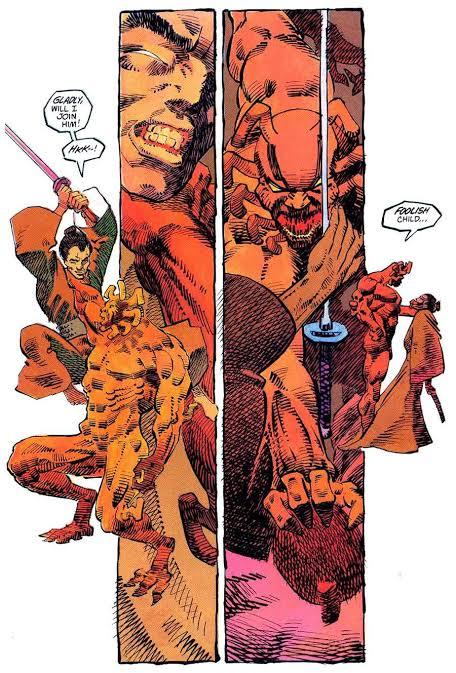

Josan Gonzalez
Josan is a renowned for exploring themes related to science fiction, dystopia, and above all, cyberpunk. He has already stated in an interview that he is strongly inspired by big names like Moebius, Katsuhiro Otomo - creator of Akira - and Geoff Darrow.
Gonzalez likes to create characters full of personality and compose scenarios rich in details. Josan has a very characteristic artistic artistic style: he uses complex line arts, flat colors and limited color palettes.
Being born in Spain, Josan starts reading comics since he was a teenager and this will influence later in his artistic aesthetic.
Initially he adopted a more painterly style which evolved later in the line work. Despite being always passionate about art he never thought it would make a real career from it. He succeeds in publishing his own books and working for big names such as Dark Horse and Boom Studios.
People is considering Josan’s work as being part of Cyberpunk genre, but the artist doesn’t like to classify them. He enjoy creating illustrations without establishing rules, just giving shapes to a futuristic world. Many of Gonzalez characters are linked by cables, which are a perfect metaphor for linkage human-technology. For a lot of artwork the artist get inspiration from religious imagery. Providing his characters with catholic and Hindu symbols. Mostly this happens, because of his catholic background in Spain. Another aspect, is showing people’s addiction with technology, which keep them repressed. Even if the artist explores different social questions his main goal remains the illustration and making interesting and timeless.
some of his most recent works are, for example, is the cover of the new edition of the science fiction book Neoromancer, and the steelbook art of the game Cyberpunk 2077.
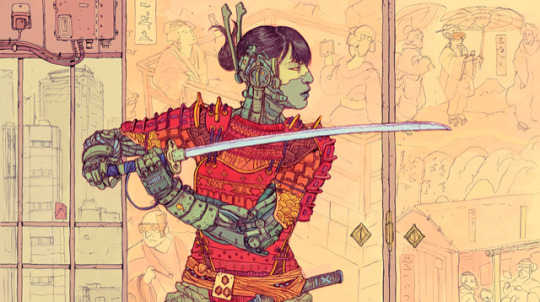


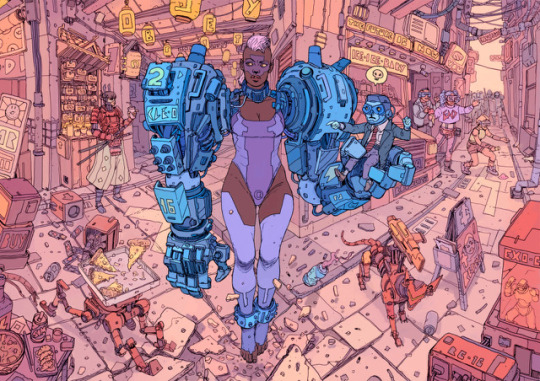
The Story of Miyamoto Musashi
Miyamoto Musashi was Japan’s most famous samurai. He is credited with authoring the most important treatise in Japanese strategy, the “Book of Five Rings”.
Musashi Sensei, as his disciples still call his fighting style, lived from 1584 to 1645.
Musashi dedicated his life to reach perfection through the art of the sword. He fought and won more than 60 life and death duels, and was never defeated. He made contact with other art forms, such as painting, sculpture, calligraphy and poetry, in addition to Zen meditation and Buddhism.
Musashi was born in the province of Harima during one of the most troubled periods in the history of Japan, when the last great battles of the time of the samurai took place.
At the time, it was common in Japan for the same person to change his name at different stages of life. In childhood, Musashi Sensei was called Shinmen Bennosuke. It is believed that he received the first Kenjutsu (famous Japanese martial art) instructions from his father,Shinmen Hirata.
At the age of 13 he won his first duel, and won the second duel when he was 16 years old, as reported in The Book of Five Rings.
In his book Musashi says that his strategy to deconcentrate the opponent and beat him was to arrive late at the place of the duel. On the way, Musashi carved a sword out of a broken paddle and with this sword he dealt a blow to Kojiro winning the duel, which, although fast, is one of the most famous in the history of the samurai. The duel was immortalized in a monument on the island of Funajima representing the figure of the two warriors.
The Funajima duel was a turning point in Musashi’s life because from then on he began to reflect on how he had won so many duels and to dedicate himself to the task of leaving a legacy for future generations. It was from there, too, that Musashi began to dedicate himself to other arts such as painting and poetry.
He worked primarily with a style of ink painting, creating minimalist, monochromatic works portraying nature.
The last years of his life, Musashi spent as a guest with his friend, and then isolated himself in the cave of Reigando where he dedicated himself to meditation and practice of his art writing his Book of Five Rings right there.
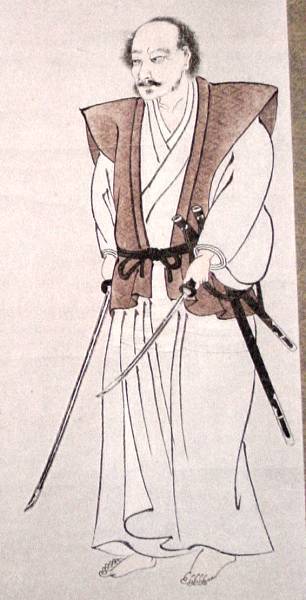

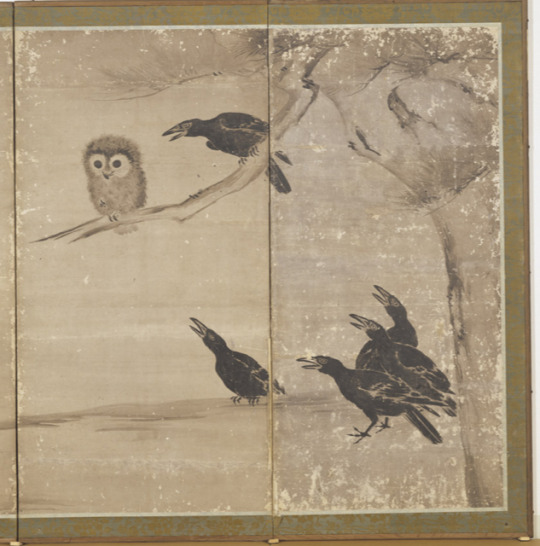

Ned Bear Mask Artist
Sculptor Edward (Ned) Bear has combined study in Native education with an Honours Diploma from Vancouver college.
He has an extensive knowledge of Native art and culture, Bears has also made contributions to change as a curator, guest speaker and juror.
Bear was born in the town Frederecton, New Brunswick, Canada. When he was young boy he was inspired by a Native elder carver, and later on he received a formal training at New Brunswick College of Craft and Design, where he became the first aboriginal student to graduate. Bear received additional training at a Indian Federated College in Nova Scotia.
Bear created sculpted masks and marble or limestone figure forms. His masks are approximately three feet high and are usually carved from butternut. Each mask is adorned with horse hair ( symbolizing the free spirit), bear fur ( symbolizing healing) and metal ( symbolizing something which is of the earth). Each mask tells a story and offer a modern interpretation of traditional spiritual beliefs.
When creating art, Bear considered himself to be simply a vehicle through which energy flows from the eternal Great Spirit to the medium he is using. He doesn’t create any sketches for the masks, he said that he allows the great spirit to guide him through the process.
Ned Bear made significant contributions as an instructor of Native art and culture, a curator, a guest speaker, and a juror.
The indigenous sculptor died on the Christmas evening of 2019, at the age of 65. “ We delve into so many past wrongs of our lives that we forget to revel in the present. Learn to capture what you may never have again, now. Do what makes you content for this time, and begin to realize the true purpose of life”, said Bear.

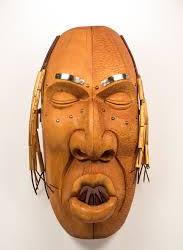
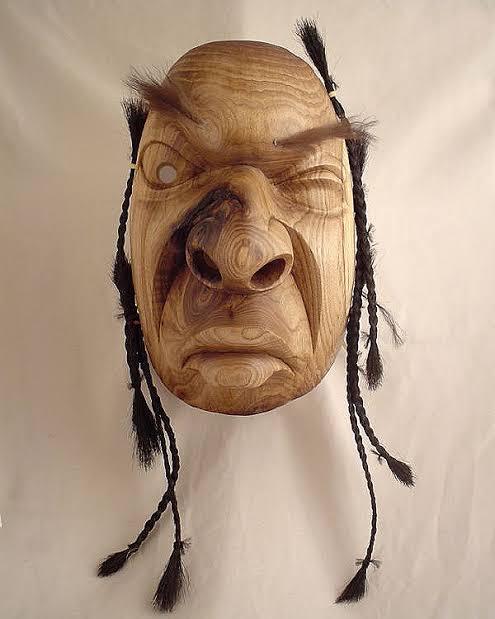

Jim Henson
Jim Henson was an American puppeteer and filmmaker, and most known for creating the Muppets, and directing most of their movies and tv shows.
In the 1960s Henson and his future wife, Jane Nebel, created a puppet show on Washington television station and kept their jobs through the school years, developing the first Muppets (including Kermit) on a one minute television show called Sam and Friends.
The success of Sam and Friends led Henson to create his own company in 1958, initially called Muppets,inc. and many years later, The Jim Henson Company.
Part of the resounding success of Henson’s puppets was due to their innovative view that puppet controllers did not need to be hidden by physical objects while controlling them.
By instructing the camera controllers to focus on the puppets and keep the controllers out of sight, he allowed the puppets to dominate the TV screen and acquire more lively and similar behaviors to real people.
From the productions of Sam and Friends, many characters emerged who became famous over the years and who would become part of the famous cast of the Muppets, including their most famous member, Kermit the Frog.
The Muppet Show, which premiered in 1976 and was produced in England, gained an international audience ( it was shown in about 100 countries) and was soon followed by the film The Muppet Movie (1979).
Henson was able to create an interesting set of characters by developing innovative ideas with a sense of rhythm and humor that won an audience for both children and adults. His works are remembered in part for promoting positive values in childhood such as friendship, magic or love, themes that appeared in most of his works.
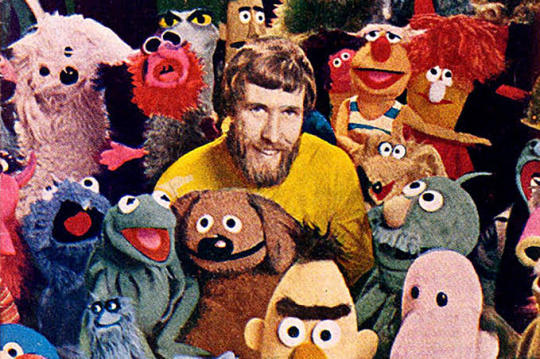

Research: Persona Brazilian Folklore research- Lobisomem
The legend of the werewolf is known practically all over the world. It defines him as being, part man, part wolf, who was cursed with lycanthropy ( the act of becoming a wolf).
The one who is cursed, becomes the werewolf on the nights of the full moon. Some variations of the legend say that lycanthropy was the result of the pact of one man with the devil.
Once transformed into a werewolf, the person frantically sets out in search of victims to kill them. Modern popular culture has spread the idea that the werewolf is vulnerable only to silver bullets or sharp objects made of silver.
Naturally, the legend of the werewolf arrived in Brazil through Portuguese, during the period when they colonized Brazil, in our country, the legend arrived and took on different characteristics in each region.
Some studies have concluded that there is no such legend among indigenous people. The closest to that were legends who believed that men or women could become some animals of the forest.
This legend in Brazilian folklore ended up acquiring elements present in its Portuguese version. Thus, it was common to believe that the werewolf was the man born after the mother had seven daughters, although versions of the legend say that if seven sons were born, the eight son would also be a werewolf.
In the north, of Brazil, the werewolf was the man who was in poor health, and the one who was anemic would eventually would become him. Once transformed, it feeds on the blood of other humans to make up for the poor diet as one of them. The transformation took place from Thursdays to Friday nights.
In the south, in turn, the fact that turned the man into a werewolf was incest. In Brazil, there was no record in the folklore of the belief in transformation of women into werewolves. In the folklore, only men becomes werewolves.
In the interior of São Paulo, it was believed that this being tried to invade the houses to eat children. Many believed that the werewolf went after, especially, unbaptized children.
One of the ways in which the person turned into a werewolf, was if he seriously injured with certain objects. One of these objects was a bullet bathed in candle wax from an altar.


11 notes
·
View notes